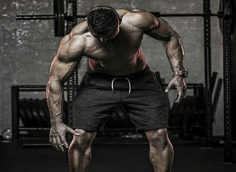How NOT to Fix a Lagging Muscle Group
When it comes to solving muscle weaknesses, most lifters just add more work: more sets, more reps, or an extra workout. But that solution comes at a great cost. It might interfere with your overall recovery and thus overall gains. The body, after all, has a limited capacity to adapt.
Adding more exercises or more work should be the last strategy to use to solve a weakness... and only when all else has failed. Instead, follow the "path of least investment" to solve any training issue you might have.
The Smart Way
Look at your program and see if there's a way to modify it so that it addresses your problem without adding more volume. Here's a step-by-step guide:
- Modifications to some of the exercises
- Switching to different exercises
- Changing the way the reps are performed
- Adding some isolation work
- Adding an extra workout (only as a last resort)
Step 1
The first thing to look at is making a slight modification to some of the exercises you're already doing. For example, if your quads are lagging you could try elevating the heels when squatting. You could also try taking short steps when doing lunges or split squats. If your triceps are undersized you can try taking a slightly narrower grip on all of your pressing exercises.
Step 2
The next solution to look into is your exercise selection. Can you make exercise choices that will put more loading on your lagging muscle? If your quads need work and you're doing back squats and deadlifts you could switch to front squats and snatch-grip deadlifts from a deficit (keeping a fairly upright torso). If you're doing lunges you could switch to Bulgarian split squats.
Step 3
If that doesn't do the job, look at the third least "expensive" way of solving the issue: modify how you're performing the reps to better hit the lagging muscle. For example, when doing squats you could use a two-second pause at 90 degrees to increase the work performed by the quads. If you want to put more emphasis on the chest you could do a low double contraction (one-and-a-half reps) on the dumbbell bench press instead of doing regular reps.
Step 4
If that doesn't do the job either, now it's time to move up the "investment scale" and add more volume. But remember, always look for the path of least investment. Don't add another big lift to your program just yet.
Instead, choose your favorite isolation exercise for your lagging muscle group and perform 2-3 sets to failure at the end of your workout. Focus on the quality of the contraction; don't even count the reps, just go until you can't contract the muscle hard enough to make the weight move. If that doesn't give you the results you want, add that same exercise to the end of two or three workouts per week.
Step 5
If all that has failed (and it isn't likely) then you can add an extra session in your training week where you focus on your lagging muscle group.





